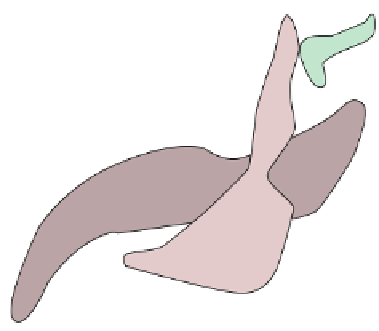Geology Reference
In-Depth Information
Their distribution can be related to regional structures such as lithosphere-scale
faults and rift systems. Cross structures then control the distribution of individual
deposits.
Porphyry deposits range in age from Archean to Recent, although most are
Jurassic or younger. On a global basis, the peak periods for development of porphyry
deposits are Jurassic, Cretaceous, Eocene, and Miocene in age. The youngest
deposits are in islands of the southwest Pacific in regions of very active tectonics.
The late Miocene Grasberg deposit in Arian Jaya has formed in a zone of intense
volcanism and rapid uplift, and will be will be totally removed by erosion within a
few million years. This example illustrates the ephemeral nature of this type of
deposit and explains why they are typically restricted to young mountain belts.
Origin
: As mentioned at the start of the chapter, the close spatial and temporal
association between of the ore bodies with granitic intrusions leaves little doubt that
magmas are directly linked with the ore-forming process. In fact there are various
strong lines of evidence that suggest that both the ore metals and the hydrothermal
fluids are derived in large part from the granitic magmas. In addition to the
geological aspects, the relationship between metal ratios and magma type, evidence
of very high temperatures and the isotopic compositions of the fluids all point in this
direction. However, as shown in Fig.
4.9
, the compositions of these fluids, as
Cornwall
-40
Magmatic fluid
Pasta
Bueno
Tanama
-60
Santa
Rita
Santa Rita
-80
Santa Rita
Ely
Ely
-100
-120
Butte
-140
Climax
-160
-180
-10
-5
0
5
10
15
20
d
18
O (permil)
Fig. 4.9 Isotopic composition of oxygen and hydrogen in fluids associated with porphyry deposits
(Modified from Barnes
1979
)







































Search WWH ::

Custom Search